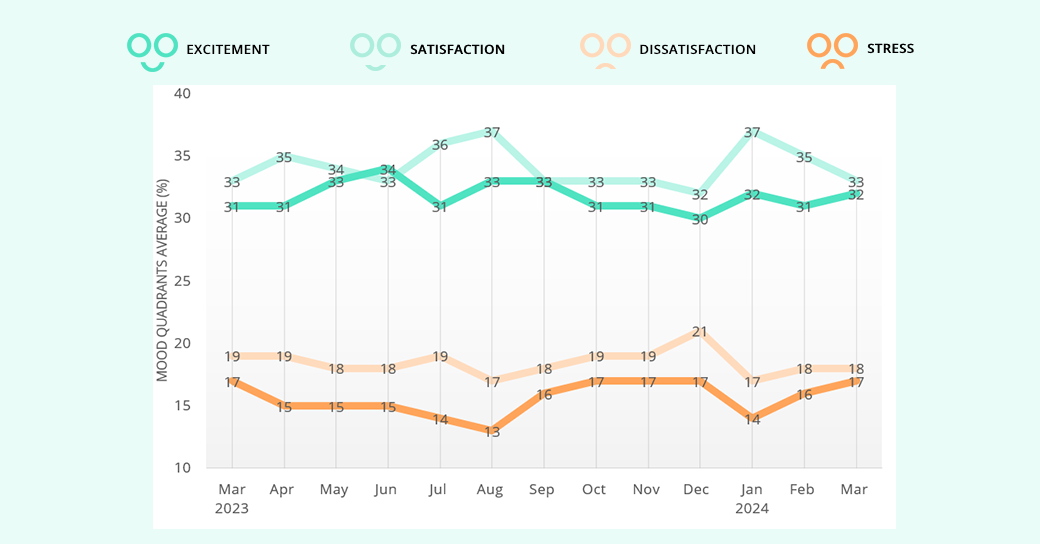Strategisch HR is een onmisbaar onderdeel van iedere organisatie: mensen zijn de drijvende kracht achter het succes van een bedrijf. Tegenwoordig is het essentieel dat organisaties daarbij ook snel kunnen inspelen op veranderingen in de markt én samenleving. Want die gaan sneller dan ooit tevoren. Hiervoor hebben organisaties flexibele en aanpasbare medewerkers, zodat er snel kan worden gereageerd op veranderende omstandigheden voor de organisatie. Dit is waar Strategisch Human Resource Management (SHRM) om de hoek komt kijken.
Wat is strategisch HR?
SHRM, oftewel strategisch HR, is een proactieve benadering van human resources, waarbij HR-praktijken worden afgestemd op de strategische zakelijke doelen van een organisatie. Zo worden huidige en toekomstige behoeften van een organisatie geïdentificeerd en wordt hierop ingespeeld. Door dit te doen, kunnen organisaties een werkomgeving creëren die medewerkers motiveert en betrekt en een cultuur van innovatie bevordert. SHRM is een essentieel onderdeel van het creëren van een duurzaam voordeel op de markt. Je stemt hiermee namelijk je HR-beleid af op de specifieke doelstellingen van de organisatie, en andersom draagt HR daarmee bij aan het behalen van die doelen.
Strategisch HR zorgt voor voordeel
Hoe draagt een strategisch HR plan bij aan het creëren van een duurzaam voordeel op de markt? Om goed in te kunnen spelen op interne en externe ontwikkelingen, zijn de volgende onderdelen van belang:
1. Je trekt talent aan en houdt dit vast
Door je HR strategie af te stemmen op bedrijfsdoelstellingen, kun je een werkomgeving creëren die medewerkers motiveert en betrekt. Dit kan op zijn beurt leiden tot een lager personeelsverloop en een hogere medewerkerstevredenheid. Medewerkers zijn namelijk meer betrokken bij de doelen van de organisatie.
2. Je speelt in op flexibiliteit
Naarmate de bedrijfsomstandigheden veranderen, moeten organisaties zich snel kunnen aanpassen aan nieuwe uitdagingen en kansen. Door je HR strategie af te stemmen op bedrijfsdoelstellingen, kun je zorgen dat medewerkers zijn opgeleid en klaar zijn om zich aan te passen aan nieuwe situaties.
3. Je ontwikkelt een innovatiecultuur
Creëer een omgeving die creativiteit en het nemen van risico’s aanmoedigt en goed is afgestemd op je organisatiedoelen. Zo kun je een innovatiecultuur bevorderen waarin constant wordt gekeken naar ontwikkeling (zowel van medewerkers als de organisatie) en nieuwe mogelijkheden.
Strategisch HR plan: stap voor stap
Er zijn dus veel voordelen aan het afstemmen van de HR-doelen op de strategische organisatiedoelen. Maar hoe ga je dit effectief doen?
Stap 1: kijk naar de omgeving
Hou de omgeving waarin de organisatie zich begeeft en de ontwikkelingen daarbinnen goed in de gaten. Welke in- en externe trends zie je? Hoe denk je dat deze zich in de toekomst gaan ontwikkelen? Dit kan je al veel informatie geven op welke kant de organisatie op moet gaan bewegen.
Stap 2: duik in de organisatiestrategie
Wat zijn de plannen van de organisatie in de komende jaren? Hiervoor kun je veel informatie ophalen bij collega’s. Denk aan de missie en visie, de belangrijkste doelen, de markt en de concurrentie daarin. En ook niet geheel onbelangrijk: wat zijn de kernwaarden? Als je deze factoren goed begrijpt, kun je een vertaalslag maken naar strategisch HR.
Stap 3: identificeer de HR-doelen
Hoe kun je als HR bijdragen aan het behalen van de doelstellingen van de organisatie? Dat zijn je belangrijkste doelen om HR strategisch in te zetten. Kijk bijvoorbeeld hoe je ervoor kunt zorgen dat de cultuur in de organisatie overeenkomt met de missie en visie. Of hoe je de kernwaarden kunt laten leven onder medewerkers. Maar ook het aantrekken en behouden van medewerkers speelt hierbij vaak een grote rol.
Stap 4: waar maak je het meeste impact?
Wil je effectief aan de slag met strategisch HR? Dan is het belangrijk om je acties goed doordacht in te zetten. Dit kun je doen door regelmatig te meten. 2DAYSMOOD gebruikt hierbij het Employee Happiness Model, waarin 15 factoren zijn geïdentificeerd die een wetenschappelijk bewezen invloed hebben op betrokkenheid en werkgeluk van medewerkers.
Als je met deze factoren een nulmeting doet (waar sta je nu?), zie je hoe belangrijk de factoren zijn en hoe tevreden medewerkers daar nu over zijn. Vinden ze bijvoorbeeld de missie en visie heel belangrijk, maar zijn ze hier nog niet tevreden over? Dan kun je het meeste impact maken door dit aan te pakken. Zo zet je alleen acties in waarvan je wéét dat het bijdraagt aan de doelen van de organisatie.
Stap 5: blijf voortdurend verbeteren
De enige manier om te zorgen dat je HR-strategie blijft aansluiten bij de doelen van de organisatie, is door continu te monitoren welke effecten de HR-strategie heeft. Zo kun je het regelmatig herzien en bijwerken zodat deze in lijn blijft met de gehele organisatiestrategie. Haal hiervoor feedback op vanuit verschillende lagen van de organisatie. En blijf de omgeving goed in de gaten houden. Zo kun je een continue verbetercultuur realiseren!
Strategisch HR: essentieel voor innovatie
Om een wendbare organisatie te creëren, die toekomstbestendig is, is strategisch HR onmisbaar. Zoals we eerder al zeiden: mensen zijn de bepalende factor in het succes van je organisatie. Daarom is het belangrijk om te zorgen dat de doelen van je HR strategie en de organisatiestrategie op elkaar aansluiten. Dan creëer je een sterke organisatie met gelukkige, doelgerichte medewerkers!




